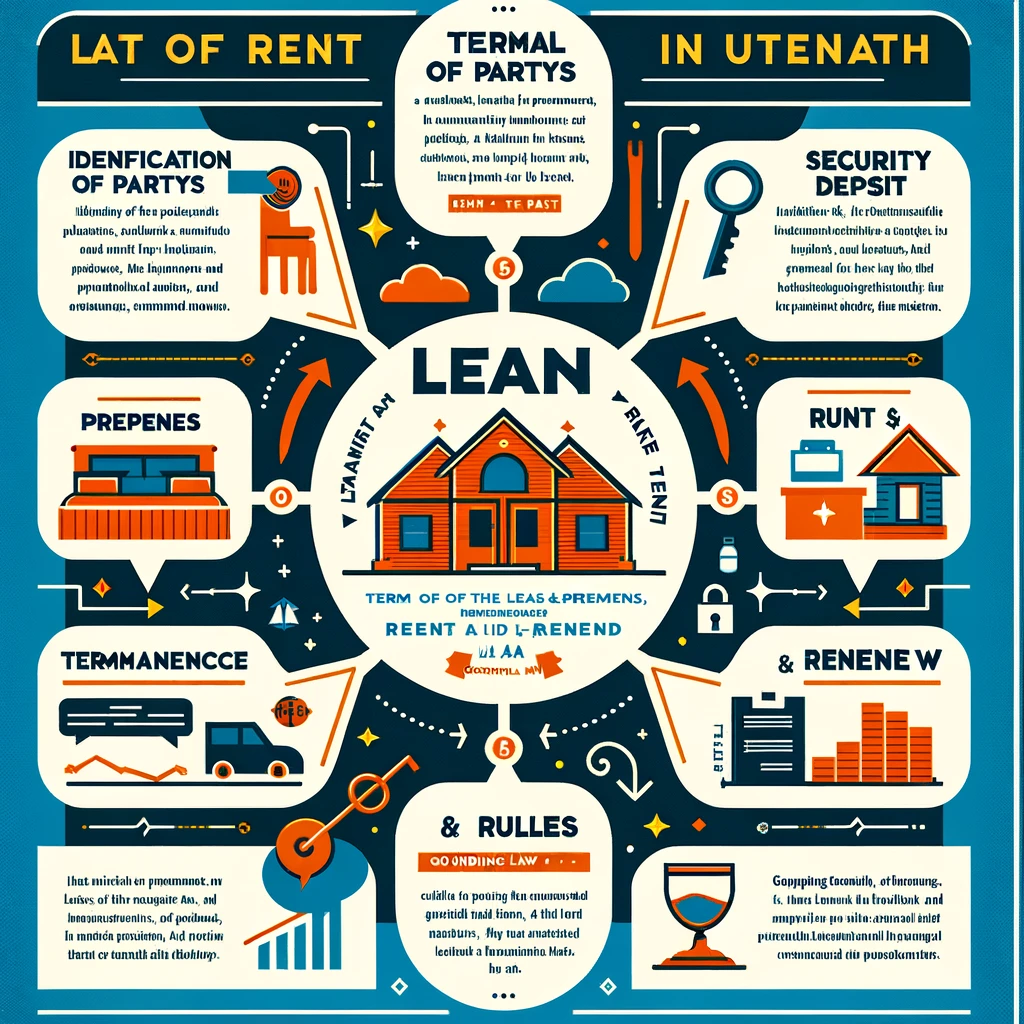Understanding Utah Rental Agreements: A Comprehensive Guide
Navigating the intricacies of rental agreements in Utah requires a deep understanding of the state's specific laws and regulations. This comprehensive guide aims to provide landlords and tenants with crucial information about Utah rental agreements, ensuring both parties enter into leases with confidence and clarity.

Introduction to Rental Agreements in Utah
A rental agreement, often referred to as a lease, is a legally binding document between a landlord and tenant. In Utah, these agreements are governed by the Utah Residential Landlord and Tenant Act. The act outlines the rights and responsibilities of both landlords and tenants, aiming to protect both parties involved in the rental process.
Importance of Understanding Rental Agreements
A well-structured rental agreement serves as the foundation of a positive landlord-tenant relationship. It ensures that both parties are aware of their obligations, reducing potential conflicts during the tenancy. Moreover, understanding the specifics of Utah's rental laws can help parties navigate disputes and legal challenges more effectively.
Key Elements of a Utah Rental Agreement
While rental agreements can vary, certain elements are essential to include to ensure they comply with Utah law:
1. Identification of Parties and Premises
Clearly state the names of the landlord and tenant(s) and the rental property's address. This basic information sets the foundation for the agreement.
2. Term of the Lease
Specify whether the lease is fixed-term or month-to-month. Utah law has different requirements for terminating each type of lease, as outlined on the Utah Courts' official website.
3. Rent Details
Include the amount of rent, due dates, and acceptable payment methods. Utah law requires landlords to provide a grace period for rent payment, as detailed in the Utah Code.
4. Security Deposit
Outline the amount of the security deposit and terms for its return. Utah regulations regarding security deposits can be found in the Utah Code, ensuring protection for both landlords and tenants.
5. Maintenance and Repairs
Define the responsibilities of both parties for maintaining the property, in accordance with Utah's landlord-tenant laws, which aim to ensure safe and habitable living conditions.
6. Rules and Policies
Detail any specific rules regarding pets, noise, and other policies affecting the use of the property. These rules must comply with Utah law and respect tenants' rights.
7. Termination and Renewal
Explain the conditions under which the lease may be terminated or renewed. This includes notice periods as required by Utah law.
8. Governing Law
State that the agreement is governed by Utah state laws, ensuring that any disputes will be resolved under the jurisdiction of Utah courts.
Drafting and Executing a Utah Rental Agreement
Creating a rental agreement that complies with Utah law involves several steps:
Research: Both landlords and tenants should familiarize themselves with Utah's rental laws, which can be accessed through the Utah State Legislature's website.
Drafting: Use a template as a starting point but customize it to fit the specific rental situation. Consider consulting with a legal professional to ensure the agreement meets all legal requirements.
Review and Negotiate: Both parties should thoroughly review the agreement and negotiate any terms if necessary. This ensures mutual understanding and agreement before signing.
Sign and Date: Once both parties agree to the terms, they should sign and date the agreement. Provide a copy to the tenant for their records.

Create & Review Your Contracts 10x Quality and Ease
Lawyer-level AI handles all your contract needs, with real lawyers providing safeguarding support

Legal Resources and Assistance
For those seeking further information or assistance with Utah rental agreements, several resources are available:
Utah Legal Services (https://www.utahlegalservices.org): Offers legal assistance to low-income individuals and can provide guidance on landlord-tenant issues.
Utah Housing Coalition (http://utahhousing.org): Aims to improve housing affordability and rights in Utah, offering resources for tenants and landlords.
Utah State Bar (https://www.utahbar.org): Provides a directory of lawyers specializing in landlord-tenant law.
Conclusion
Understanding and properly executing rental agreements in Utah is essential for maintaining a lawful and harmonious landlord-tenant relationship. By adhering to Utah's specific laws and including all necessary elements in the rental agreement, both landlords and tenants can protect their rights and interests. Always consider consulting with legal professionals to ensure that your rental agreement is comprehensive and compliant with Utah law.

